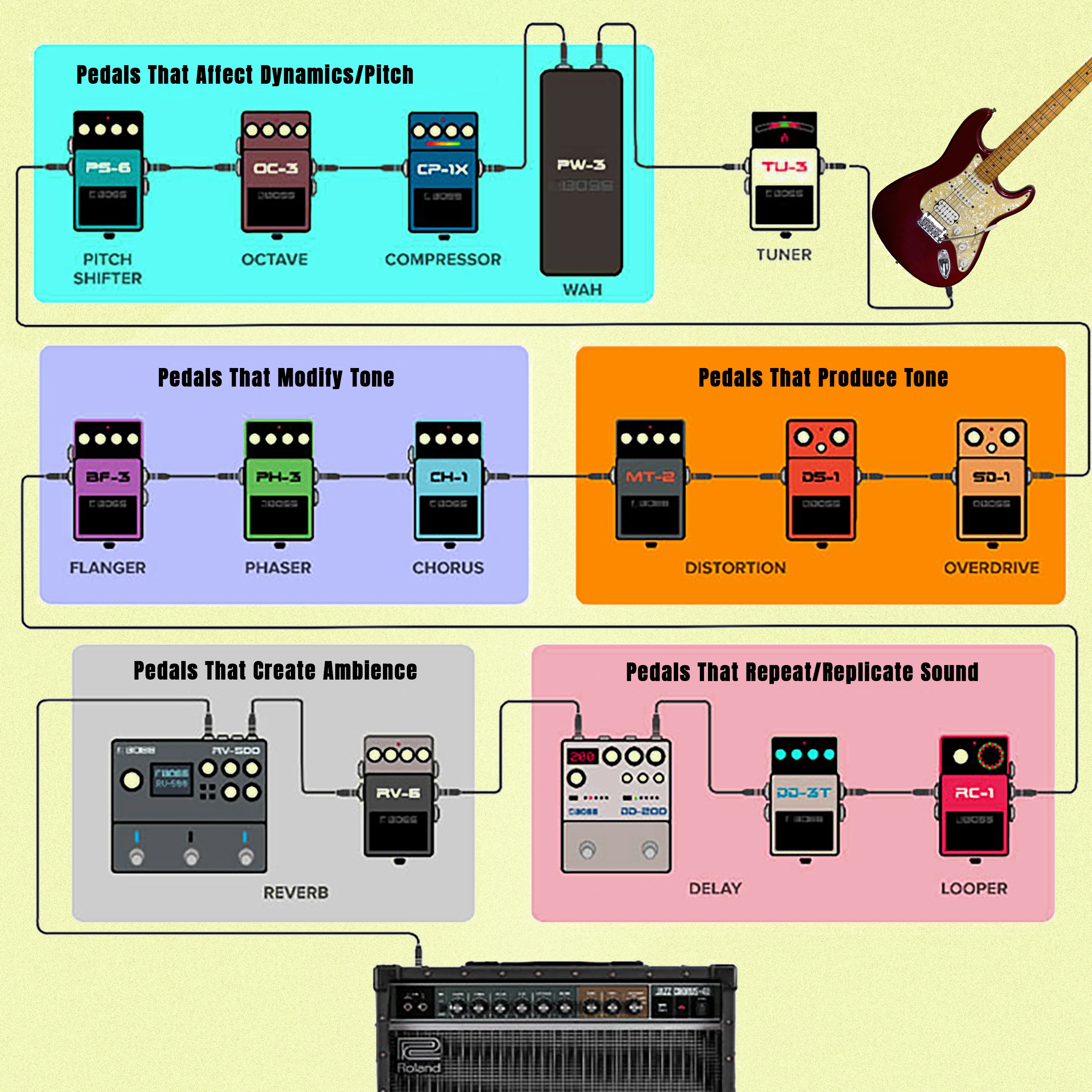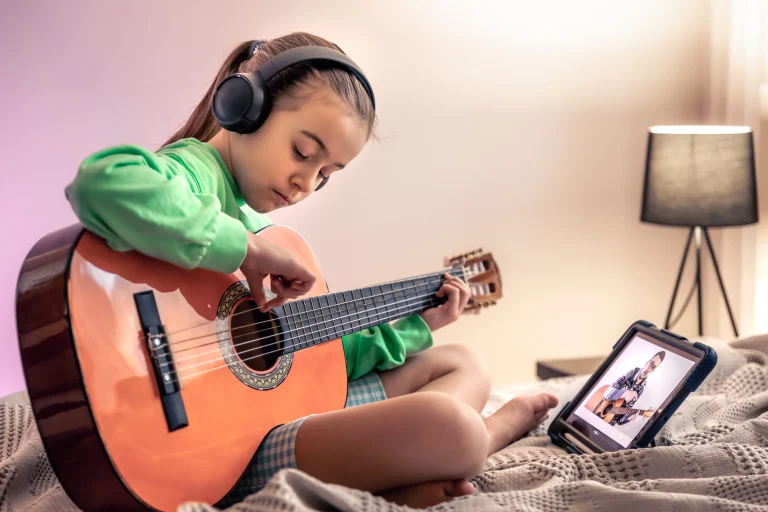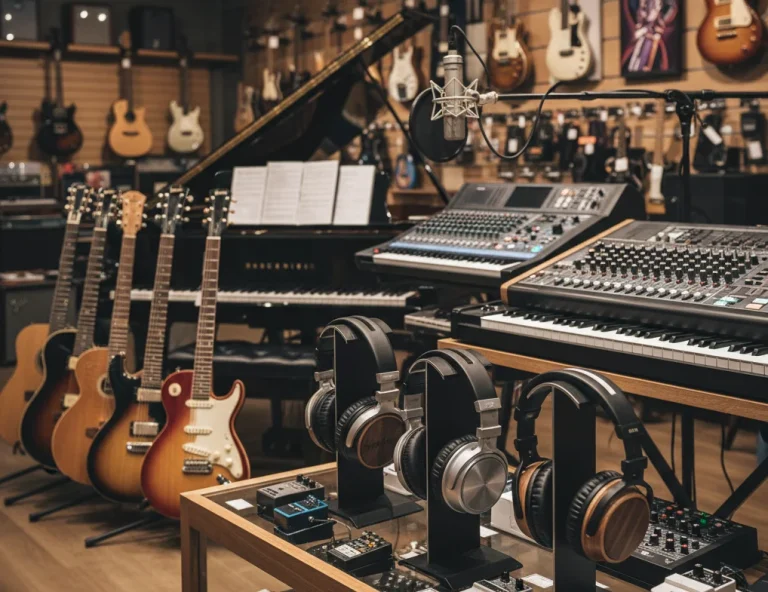All Topics
- Alchemizing Music Concepts for Students
- Artist Spotlight
- artium gift card
- Artium Maestros
- Artium News
- buying guide
- Carnatic Music
- Devotional Music
- Editorials by Ananth Vaidyanathan
- Film Music
- Guitar
- Hindustani Classical Music
- Indian Classical Music
- Indian Folk Music
- Insights
- Instruments
- Karaoke Singing
- Keyboard
- Kids Music
- maestros
- Music Education
- Music for Kids
- Music Industry
- Music Instruments
- Music Legends
- Music Theory
- Music Therapy
- Piano
- piano guide
- Success Stories
- Tamil Film Music
- Telugu Film Music
- Time Theory
- Tools
- Uncategorized
- Vocal Singing
- Vocals
- western classical music
- western music
- Western vocal music
Why You Should Experiment with Different Guitar Pedals?
Why You Should Experiment with Different Guitar Pedals?

Table of Contents
If you’re a guitarist, you’ve probably wondered how to add depth, texture, and personality to your sound. While technique and practice are essential, guitar pedals can be a game-changer in shaping your tone. These small but powerful devices allow you to experiment with different effects, making your playing more dynamic and expressive.
Whether you’re a beginner or an experienced player, trying out different guitar pedals can unlock new creative possibilities. Below, we will explore the types of pedals, how they enhance your sound, and how online guitar lessons for beginners can help you master them.
But before that…
If you’re excited to begin your online guitar learning journey, start with a free trial lesson today!
5 Different Types of Guitar Pedals and Their Uses

In case you’re wondering what type of guitar effects pedals you need, then look no further, we will list out the different types of guitar pedals and their respective uses.
- Distortion and Overdrive Pedals
These pedals are a staple for rock and metal guitarists. Distortion pedals add a heavier, more aggressive tone, while overdrive pedals mimic the natural breakup of a tube amplifier. If you are a fan of blues, rock, or punk, these pedals are essential for creating that signature gritty sound.
- Delay and Reverb Pedals
Delay pedals can create an echo effect by repeating the sound of your guitar, while reverb adds a natural ambience, making your playing feel more spacious. These pedals are great for creating atmospheric soundscapes in genres like ambient, post-rock, and even classic blues.
- Chorus, Flanger, and Phaser Pedals
These modulation effects alter your sound in unique ways. Chorus pedals make your guitar sound fuller, almost like multiple guitars playing together. Flanger pedals create a sweeping effect, while phase guitar pedals add a swirling, wave-like motion to your sound. These are perfect for achieving classic rock, psychedelic, or experimental tones.
- Wah and Envelope Filter Pedals
Wah pedals give your guitar a ‘talking effect’ that is famously used by legends like Jimi Hendrix and Eric Clapton. Envelope filter pedals respond dynamically to your playing, creating funky, expressive tones that are often heard in funk and jazz music.
- Looper Pedals
Looper pedals allow you to record and layer multiple guitar parts in real time. They are fantastic for solo performers who want to build their own backing tracks or practice improvisation.
How to Use Guitar Pedals to Enhance Your Sound?

Now that you know the different kinds of pedals, let’s understand how to use them in the most efficient way possible below.
- Experiment with Order and Placement
The way you arrange your pedals in the signal chain can significantly impact your tone. A common setup follows the following order:
– Dynamic effects (compressors, EQ)
– Gain-based effects (overdrive, distortion, fuzz)
– Modulation effects (chorus, flanger, phaser)
– Time-based effects (delay, reverb)
We suggest you try different arrangements to see how each guitar pedal interacts with the others.
- Dial in the Right Settings
Every pedal has knobs that control different aspects of the effect. Instead of cranking everything to the max, take time to experiment with subtle adjustments. Even small tweaks can lead to big changes in your tone.
- Combine Effects Creatively
Layering different effects can result in unique and inspiring sounds. For example, using a delay with a distortion pedal can create a soaring lead tone, while adding a chorus to a clean guitar can make it sound richer. Do not be afraid to mix and match!
- Use Pedals to Match Different Styles
If you play multiple genres, pedals allow you to adapt your sound quickly. A clean boost and reverb might work well for jazz, while adding a fuzz pedal can make your blues playing even more powerful. Having a versatile pedalboard lets you switch between styles effortlessly.
How to Learn Guitar Online and How to Use Guitar Pedals in Online Guitar Lessons?
In case you’re new to guitar pedals, learning how to use them effectively can feel overwhelming at first. The good news is that online guitar lessons for kids and adults can help you master pedal techniques and integrate them into your playing.
- Learn Guitar Online from Experienced Instructors
Professional guitar teachers can guide you on how to set up your pedalboard, adjust settings, and use effects tastefully without overpowering your tone.
- Get Personalised Guidance
Online guitar lessons for beginners allow you to receive feedback on how your pedals sound in real-time. Instructors can suggest settings that suit your playing style and help you avoid common mistakes.
- Explore Different Genres
Many online guitar courses cover various styles, from blues and rock to metal and ambient music. Learning how different musicians use pedals in their genres can expand your creative approach.
- Convenient and Flexible Learning
Unlike in-person classes, guitar lessons for beginners let you learn guitar at your own pace. You can practice new pedal techniques at home, experiment with different sounds, and revisit lessons whenever needed. You can even consider enrolling in a guitar course online at Artium Academy.
Find Your Signature Sound, One Pedal at a Time
Guitar pedals are a fantastic way to experiment with your sound and take your playing to the next level. Whether you want to add warmth, create atmospheric textures, or produce mind-bending effects, there is a pedal for everyone.
By understanding different types of pedals, experimenting with settings, and taking online guitar lessons, you can master these tools and make your guitar-playing journey more expressive and exciting.
In case you’re looking for expert guidance on using guitar pedals effectively, Artium Academy offers online guitar lessons that are taught by experienced mentors who can help you refine your tone and explore new creative possibilities. With personalised learning and a structured online guitar course, you can develop your skills, experiment with effects, and bring musical ideas to life. So, why wait? Grab your pedal, plug in, and let your creativity run wild.
FAQs on Guitar Pedals
First, you need to connect your guitar to a pedal using a patch cable and then connect the pedal to your amplifier. Secondly, ensure the pedal is powered by a battery or an adapter. Once the pedal is switched on, adjust the knobs to control the aspects like gain, tone, delay or modulation. You will have to experiment with knob placements and other settings to get the desired tone you’re aiming for. When you join guitar lessons for beginners, you will be taught how to use the pedals effectively and musically.
Yes, many guitar pedals offer effects like distortion, delay, chorus and compression. Choosing the right one is important though, as some pedals may not be able to handle lower frequencies. If you’re using guitar pedals with a bass guitar, test them out individually to ensure they don’t muddy your tone.
Guitar pedals add various sound effects to guitars, like distortion, delay, reverb, and modulation (like chorus and phaser). This helps the guitarist to enhance their playing style and adapt to different musical genres. Pedals add to the guitars, the element of depth, expression and versatility to the sound.
The most commonly recommended guitar pedals are Tuner pedals, Overdrive or Distortion pedals, Delay pedals, Reverb Pedals, and Chorus peals. These form a great foundation for most styles and are often covered in online guitar courses to help you get started with the basics.
The first step is to connect the guitar to the input jack of the pedal using a patch cable. Secondly, connect the output jack of the pedal to the amplifier’s input. Now, power the pedal using a 9V battery or a compatible power adapter. Lastly, switch it on and adjust the knobs to tweak the effect of your liking.
Using multiple effects pedals allows guitarists to layer and combine different sounds, offering a wider sonic palette. For example, adding delay to distortion creates a soaring lead tone, while using a chorus with clean tones produces a lush, full sound. Each pedal adds a new dimension, and using them creatively helps define your unique tone. It’s like building your sound signature.








